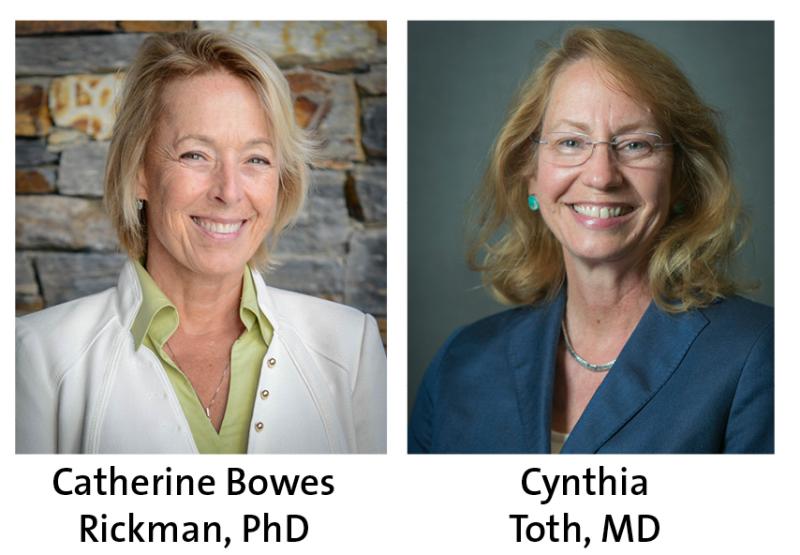
Age-related macular degeneration (AMD) is the most common cause of blindness among the elderly. There are two types of AMD, neovascular or “wet” form of AMD for which effective treatment exists and non-neovascular or “dry” form for which no therapy is successful. To investigate the current state of research on this disease and guide research directions and expedite the development of new treatments, a panel of investigators was assembled by the National Advisory Eye Council (NAEC). The expert panel includes Duke ophthalmology researchers Catherine Bowes Rickman, PhD and Cynthia Toth, MD.
The ideas proposed by the panel were published in Nature Communications and suggests large-scale, integrated collaboration of leading clinicians, imaging experts, a wide variety of basic scientists, bioinformaticians and biostaticians. The experts also recommend creating a large biorepository of eye tissue from donors with and without AMD, generating multiple types of 'omics data from disease and normal eye tissue, and designing computer models of the disease along with animal models.
"The convening and recommendations of this expert panel represents a milestone in the future of dry AMD treatments. We look forward to partnering with our colleagues to better understand the disease using a systems biology approach to find possible treatments to delay or cure AMD,” says Catherine Bowes Rickman, PhD, Professor of Ophthalmology at Duke University School of Medicine.
The authors also ask agencies such as the National Institutes of Health (NIH) to reconsider how they allocate funding in order to make this possible. In addition, the authors suggest longer follow-up times with clinical trial patients, given there likely are different factors at play at different stages of the disease.
Funding for the Nature Communicaitons article was provided by NIH EY027691; NIH R42 EY029625-01; BrightFocus Foundation; Macular Degeneration Foundation; Wilmer-Bayer Alliance Grant, Bayer Pharmaceuticals, Inc.; Unrestricted Grant from Research to Prevent Blindness (Wilmer Eye Institute), Robert Bond Welch Professorship. C.B.R.: NIH R01 EY026161; P30 EY005722 to Duke University, a Research to Prevent Blindness (RPB)/International Retinal Research Foundation (IRRF) Catalyst Award for Innovative Research Approaches
for AMD, an unrestricted grant from RPB (to the Duke Eye Center), and a Fighting Blindness Individual Investigator Award. A.D.D.: NIHR Biomedical Research Centre Moorfields Eye Hospital and UCL-Institute of Ophthalmology, National Eye Research Centre UK, Macular Society UK, Medical Research Council UK, Rosetrees Trust UK. M.B.G.: Harold and Pauline Price Foundation, Research to Prevent Blindness, NY, NY, NIH/NEI R01 EY09859 Gorin (PI). J.W.M.: NEI Core Facility Grant EY014104, Yeatts Retina Fund, Research to Prevent Blindness, Retina Research Fund, Champalimaud Vision Award. C.A.T.: an unrestricted grant from RPB (to the Duke Eye Center). M.U.: EYE-RISK is funded by the Horizon 2020 program of the European Union. Funding is provided to Marius Ueffing in the period of 2015–2019 under Grant Agreement number 634479. M.Z.: Joseph J. and Marguerite DiSepio Retina Research Fund; Eng Family Foundation; New Jersey Lions Eye Research Foundation; Paid Consultant for: California Institute of Regenerative Medicine, Cell Cure, Chengdu Kanghong Biotechnology Co., Coherus Biosciences, Inc., Daiichi Sankyo, Frequency Therapeutics, Foundation Fighting Blindness, Genentech/Roche, Healios KK, Inc., Iridex, Isarna Therapeutics, Makindus, Novartis Pharma AG, Ophthotech Corp., Percept Corp. L.A.F.: NIH U01-AG032984, NIH UF1-AG046198, NIH R01AG048927, NIH RF1-AG057519.